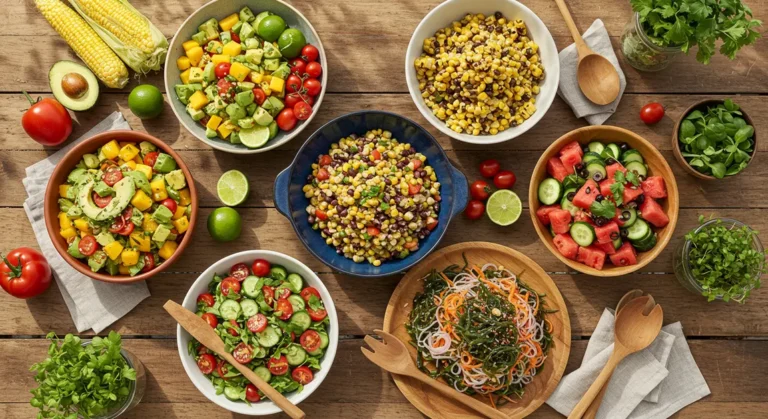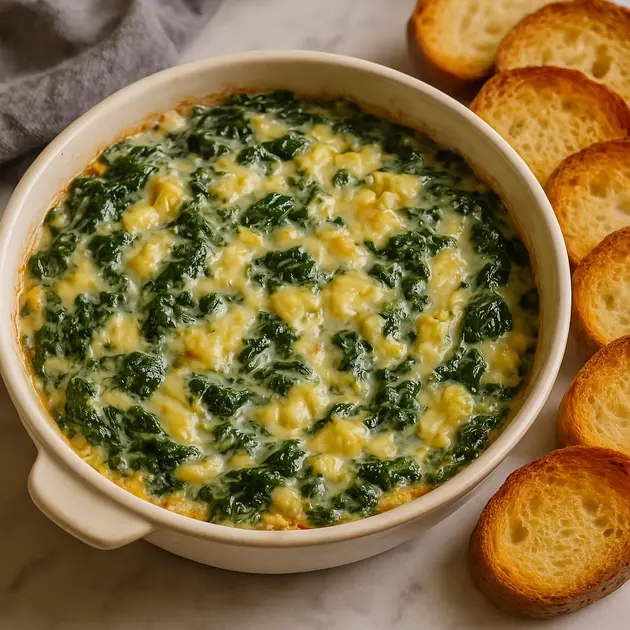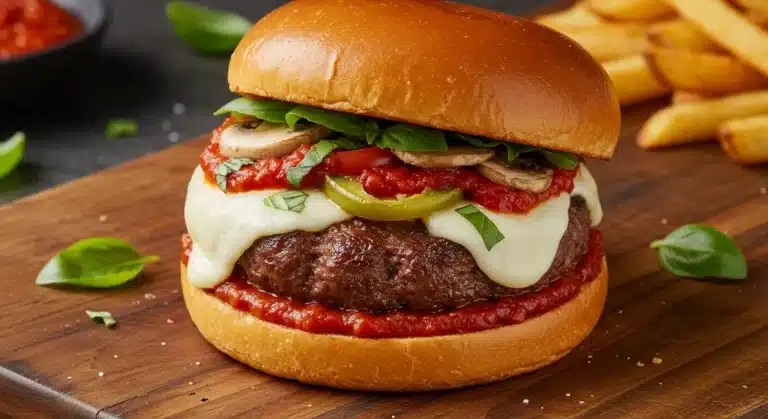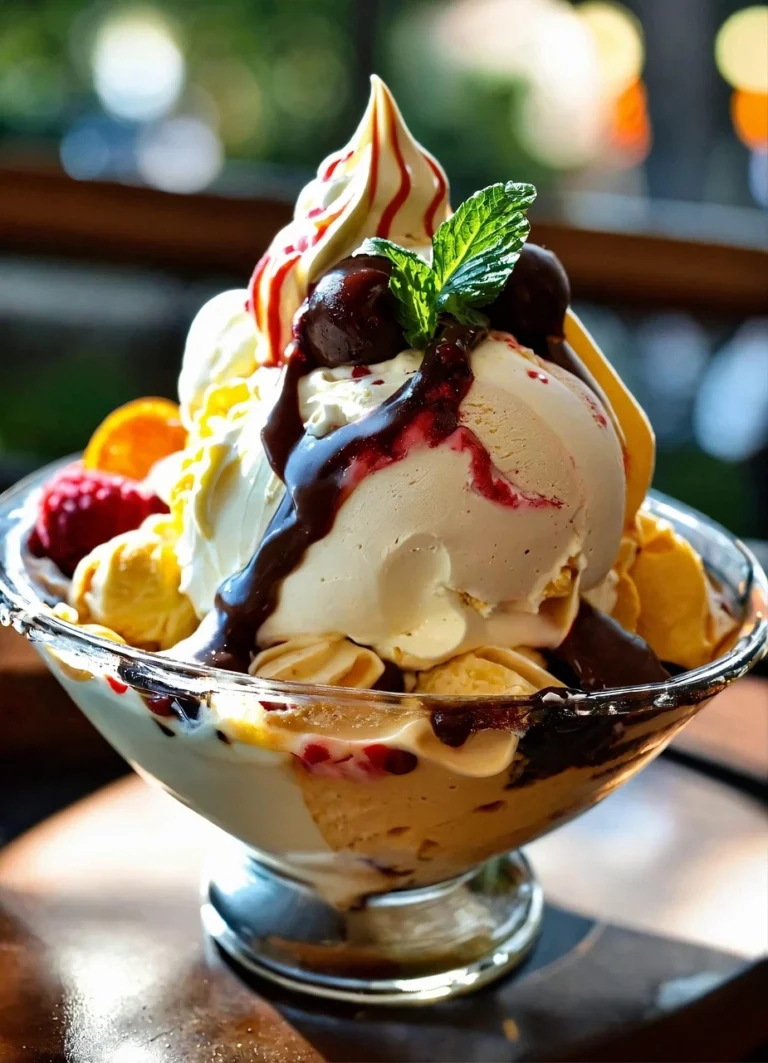Irresistible Shrimp Salad Recipe: Zesty, Healthy & Ready in 10 Minutes
A perfect blend of succulent shrimp, fresh vegetables, and zesty dressing that creates a refreshing meal for any occasion. Learn how to make the best shrimp salad with Asian-inspired variations including stir-fry techniques and Chinese flavors.
Table of Contents
Meta Description: Discover our ultimate shrimp salad recipe with easy step-by-step instructions, plus delicious Asian-inspired variations featuring stir-fry techniques and Chinese flavors. Ready in under 30 minutes!
Introduction: Why Shrimp Salad Recipe Should Be Your Next Favorite Meal
Shrimp salad recipe represents the perfect balance of nutrition, flavor, and convenience. As one of the most versatile seafood options available, shrimp brings protein-packed goodness to any dish while requiring minimal preparation time. Whether you’re looking for a light lunch, impressive dinner starter, or a complete meal, a well-crafted shrimp salad delivers satisfaction without weighing you down.
What makes shrimp particularly special is its ability to absorb and complement various flavor profiles. From classic lemon-garlic combinations to more adventurous Asian-inspired marinades featuring ginger and soy, shrimp serves as an excellent canvas for culinary creativity. This adaptability makes it perfect for those who enjoy experimenting in the kitchen or need to accommodate different taste preferences.
In this comprehensive guide, we’ll explore not only the classic shrimp salad preparation but also exciting variations that incorporate stir-fry techniques and Chinese-inspired flavors. By the end, you’ll have a repertoire of shrimp salad recipes that can be customized to suit any occasion or craving.
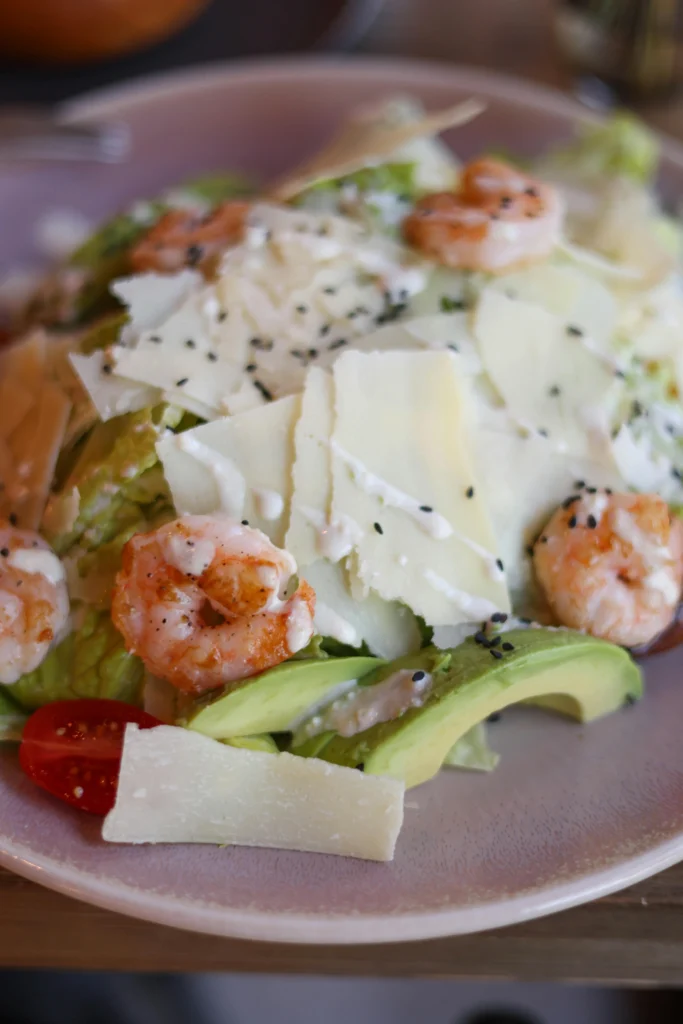
Essential Ingredients for the Perfect Shrimp Salad Recipe
The Star of the Show: Selecting and Preparing Shrimp
The foundation of any excellent shrimp salad begins with selecting quality shrimp:
- Size matters: Medium to large shrimp (21-25 count per pound) work best for salads, providing substantial bites without overwhelming other ingredients.
- Fresh vs. frozen: While fresh is wonderful when available, high-quality frozen shrimp often provides better value and convenience.
- Shell on or off: Purchasing shell-on shrimp and removing it yourself often yields better flavor, though pre-peeled saves time.
- Deveining importance: Always devein shrimp for the best texture and appearance, regardless of size.
Proper preparation ensures your shrimp maintains its ideal texture:
- Thaw frozen shrimp overnight in the refrigerator or under cold running water if pressed for time.
- Pat dry thoroughly before cooking to ensure proper browning.
- Cook just until pink and opaque—approximately 2-3 minutes per side depending on size.
- Immediately cool in an ice bath to prevent overcooking from residual heat.
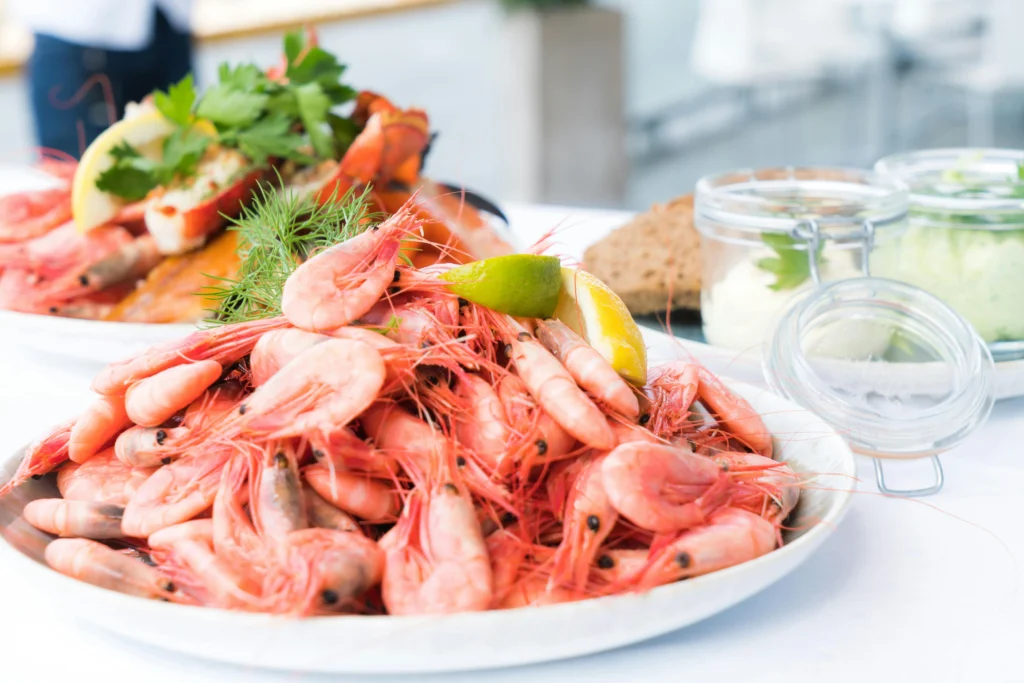
Building Flavor: Complementary Vegetables and Herbs
A balanced shrimp salad incorporates various textures and flavors through carefully selected produce:
- Crisp foundation: Romaine lettuce, baby spinach, or arugula provide the perfect base.
- Crunchy elements: Celery, cucumber, water chestnuts, or bell peppers add satisfying texture.
- Flavor enhancers: Red onion, scallions, or shallots introduce aromatic complexity.
- Fresh herbs: Dill, parsley, cilantro, or mint bring brightness and depth.
- Seasonal additions: Avocado, cherry tomatoes, corn kernels, or mango introduce seasonal variety.
Dressing Dynamics: Creating the Perfect Coating
The dressing ties everything together while complementing—not overwhelming—the delicate flavor of shrimp:
- Classic approach: Light mayonnaise base with lemon juice, Dijon mustard, and herbs.
- Asian-inspired: Rice vinegar, sesame oil, soy sauce, honey, and ginger.
- Mediterranean flair: Olive oil, lemon juice, garlic, and oregano.
- Creamy alternative: Greek yogurt base with citrus and herbs for a healthier option.
Classic Shrimp Salad Recipe: The Perfect Starting Point
This foundational recipe serves as an excellent base that can be customized to your preferences.
Ingredients (Serves 4):
- 1 pound medium shrimp, peeled and deveined
- 2 tablespoons olive oil
- 2 cloves garlic, minced
- ½ teaspoon salt
- ¼ teaspoon black pepper
- 6 cups mixed salad greens
- 1 English cucumber, sliced
- 1 cup cherry tomatoes, halved
- ½ red onion, thinly sliced
- 1 avocado, diced
- ¼ cup fresh dill, chopped
- 2 tablespoons fresh lemon juice
For the dressing:
- 3 tablespoons extra virgin olive oil
- 2 tablespoons fresh lemon juice
- 1 tablespoon Dijon mustard
- 1 small garlic clove, minced
- 1 teaspoon honey
- Salt and pepper to taste
Instructions:
- Prepare the shrimp: Heat olive oil in a large skillet over medium-high heat. Add minced garlic and sauté for 30 seconds until fragrant.
- Cook the shrimp: Add shrimp to the skillet in a single layer. Season with salt and pepper. Cook for 2 minutes on each side until pink and opaque. Remove from heat and allow to cool.
- Assemble the base: In a large bowl, combine salad greens, cucumber, cherry tomatoes, red onion, and avocado.
- Make the dressing: Whisk together all dressing ingredients in a small bowl until emulsified.
- Combine and serve: Add cooled shrimp to the salad mixture. Drizzle with dressing and gently toss to coat. Garnish with fresh dill and a squeeze of lemon juice before serving.
Asian-Inspired Variations: Expanding Your Shrimp Salad Horizons
Shrimp Stir-Fry Salad: A Warm Twist on a Cold Classic
This innovative approach combines the techniques of stir-frying with the freshness of salad for a delightful contrast of temperatures and textures.
Ingredients (Serves 4):
- 1 pound medium shrimp, peeled and deveined
- 2 tablespoons vegetable oil
- 2 cloves garlic, minced
- 1 tablespoon fresh ginger, grated
- 1 red bell pepper, thinly sliced
- 1 cup sugar snap peas, strings removed
- 2 carrots, julienned
- 4 cups mixed salad greens
- 2 scallions, thinly sliced
- ¼ cup cilantro, roughly chopped
- 2 tablespoons toasted sesame seeds
For the sauce/dressing:
- 3 tablespoons low-sodium soy sauce
- 2 tablespoons rice vinegar
- 1 tablespoon sesame oil
- 1 tablespoon honey
- 1 teaspoon sriracha (optional)
Instructions:
- Prepare the sauce: Whisk together all sauce ingredients in a small bowl and set aside.
- Stir-fry vegetables: Heat 1 tablespoon oil in a wok or large skillet over high heat. Add bell pepper, sugar snap peas, and carrots. Stir-fry for 2-3 minutes until crisp-tender. Transfer to a plate.
- Cook the shrimp: Add remaining oil to the pan. Add garlic and ginger, stirring for 30 seconds until fragrant. Add shrimp and cook for 2-3 minutes until pink and opaque.
- Combine hot and cold elements: Return vegetables to the pan with half the sauce. Toss quickly to coat and remove from heat.
- Assemble: Arrange salad greens on a serving platter or individual plates. Top with the warm shrimp and vegetable mixture. Drizzle with remaining sauce, garnish with scallions, cilantro, and sesame seeds.
Chinese-Style Shrimp Salad: Authentic Flavors in a Fresh Format
This recipe draws inspiration from traditional Chinese culinary techniques and flavor profiles while maintaining the refreshing quality of a salad.
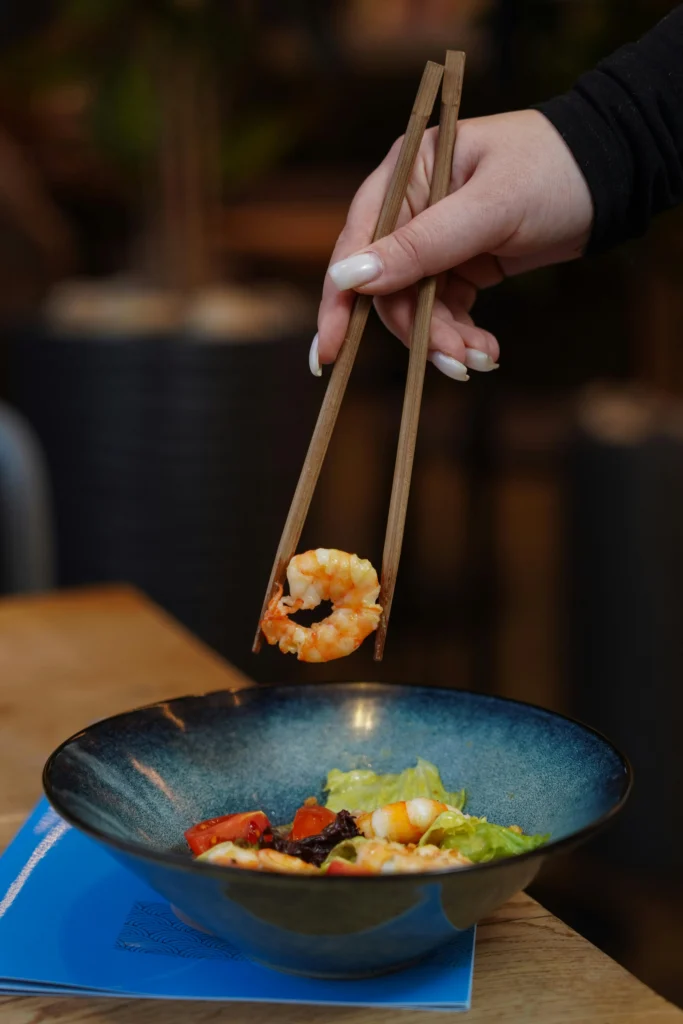
Ingredients (Serves 4):
- 1 pound medium shrimp, peeled and deveined
- 1 teaspoon cornstarch
- 1 tablespoon vegetable oil
- 2 cloves garlic, minced
- 1 teaspoon fresh ginger, grated
- 4 cups napa cabbage, thinly sliced
- 1 cup red cabbage, thinly sliced
- 1 cup snow peas, thinly sliced on diagonal
- 1 carrot, julienned
- 3 scallions, thinly sliced
- ¼ cup cilantro leaves
- 2 tablespoons toasted peanuts, chopped
For the dressing:
- 2 tablespoons light soy sauce
- 1 tablespoon Chinese black vinegar (or balsamic vinegar)
- 1 tablespoon sesame oil
- 1 teaspoon chili oil (optional)
- 1 teaspoon honey
- ½ teaspoon five-spice powder
Instructions:
- Cook the shrimp: Heat vegetable oil in a wok over high heat. Add garlic and ginger, stirring for 30 seconds. Add shrimp and stir-fry until pink and opaque, about 2-3 minutes. Remove from heat and cool slightly.
- Prepare the dressing: Whisk together all dressing ingredients until well combined.
- Assemble the salad: In a large bowl, combine both varieties of cabbage, snow peas, carrot, and half the scallions. Toss with half the dressing.
- Finish and serve: Arrange the vegetable mixture on a serving platter. Top with cooked shrimp, drizzle with remaining dressing, and garnish with remaining scallions, cilantro leaves, and chopped peanuts.
Tips for Perfect Shrimp Salad Every Time
Cooking Perfect Shrimp
- Don’t overcook: Shrimp cook extremely quickly—overcooking leads to rubbery texture.
- Visual cues: Look for shrimp to form a “C” shape when perfectly cooked; a tight “O” shape indicates overcooking.
- Temperature matters: Start with a hot pan or grill to get good caramelization before shrimp overcook.
- Seasoning timing: Salt shrimp just before cooking to prevent drawing out moisture.
Making Ahead and Storage
- Component preparation: Cook shrimp and prepare vegetables up to a day ahead, but store separately.
- Dressing strategy: Keep dressing separate until serving time to maintain optimal texture.
- Assembly timeline: For best results, assemble no more than 30 minutes before serving.
- Storage limitations: Once fully assembled, shrimp salad will keep in the refrigerator for up to 24 hours, though texture may decline.
Nutritional Benefits of Shrimp Salad recipe
Shrimp salad offers numerous health advantages, making it an excellent choice for those mindful of their nutrition:
- Lean protein: Shrimp provides high-quality protein with minimal fat.
- Essential nutrients: Rich in selenium, vitamin B12, phosphorus, and iodine.
- Heart health: Contains beneficial omega-3 fatty acids that support cardiovascular function.
- Low calorie: A protein-rich option that’s lower in calories than many meat alternatives.
- Vegetable benefits: The salad base provides fiber, vitamins, and antioxidants.
Frequently Asked Questions About Shrimp Salads
How do I know when shrimp are perfectly cooked?
Perfectly cooked shrimp turn from translucent gray to opaque pink with bright red tails. They should form a loose “C” shape—if they curl into a tight “O” shape, they’re overcooked. For medium shrimp, this typically takes just 2-3 minutes per side. Using an instant-read thermometer, the internal temperature should reach 120°F (49°C).
Can I use frozen shrimp for shrimp salad recipes?
Absolutely! High-quality frozen shrimp often provide better value and convenience than “fresh” shrimp (which are usually previously frozen anyway). For best results, thaw overnight in the refrigerator rather than using quick-thaw methods. Always pat thawed shrimp thoroughly dry before cooking to ensure proper browning.
What’s the best way to devein shrimp?
To devein shrimp, use kitchen scissors or a small knife to cut along the outer curve of the shrimp’s back, exposing the dark intestinal tract. Use the tip of your knife or a toothpick to lift out and remove this vein. For smaller shrimp, deveining isn’t always necessary but removes any potential grittiness.
How can I make my shrimp salad recipe more filling for a main dish?
Transform your shrimp salad into a heartier meal by adding complex carbohydrates like cooked quinoa, brown rice, or whole grain pasta. Additional protein sources like hard-boiled eggs or edamame also increase satiety. For healthy fats that increase fullness, incorporate avocado, nuts, or seeds.
What can I substitute for mayonnaise in creamy shrimp salads?
Greek yogurt makes an excellent mayo alternative, providing creaminess with additional protein and less fat. Other options include mashed avocado, hummus, or a combination of olive oil and acid (like lemon juice or vinegar). Each alternative brings its own flavor profile, so adjust seasonings accordingly.
How can I incorporate Chinese flavors into my shrimp salad?
Authentic Chinese flavors come from ingredients like sesame oil, rice vinegar, soy sauce, and Chinese five-spice powder. Fresh ginger, garlic, and scallions provide aromatic foundations. Consider additions like water chestnuts for crunch, mandarin oranges for sweetness, or crispy wonton strips for texture. Technique-wise, briefly stir-frying shrimp with ginger and garlic before cooling creates deeper flavor.
Conclusion: Elevating Your Culinary Repertoire with Shrimp Salads
Shrimp salad recipe represents the perfect intersection of convenience, nutrition, and culinary satisfaction. By mastering the fundamental techniques for preparing shrimp and understanding complementary flavor profiles—from classic American to Asian-inspired variations—you’ve expanded your cooking repertoire significantly.
The beauty of these shrimp salad recipes lies in their versatility. Once you understand the basic principles, endless customization becomes possible. Seasonal produce, pantry staples, and cultural flavor influences all provide inspiration for creating unique shrimp salad variations tailored to your preferences.
Whether you’re preparing a quick weeknight dinner, an impressive starter for guests, or a refreshing lunch option, shrimp salad delivers consistent satisfaction while accommodating dietary preferences and ingredient availability. The combination of protein-rich shrimp with nutrient-dense vegetables creates balanced nutrition that feels indulgent rather than restrictive.
We encourage you to use these recipes as starting points for your own culinary exploration. As you become comfortable with the techniques, don’t hesitate to experiment with different vegetables, dressings, and cooking methods—including the stir-fry approach highlighted in our Asian-inspired variations.
With practice, you’ll develop an intuitive understanding of what makes shrimp salad exceptional, allowing you to create signature versions that reflect your personal taste and cooking style. Embrace the journey of culinary discovery that begins with this versatile, delicious dish!
for more recipes visit us!!!!


